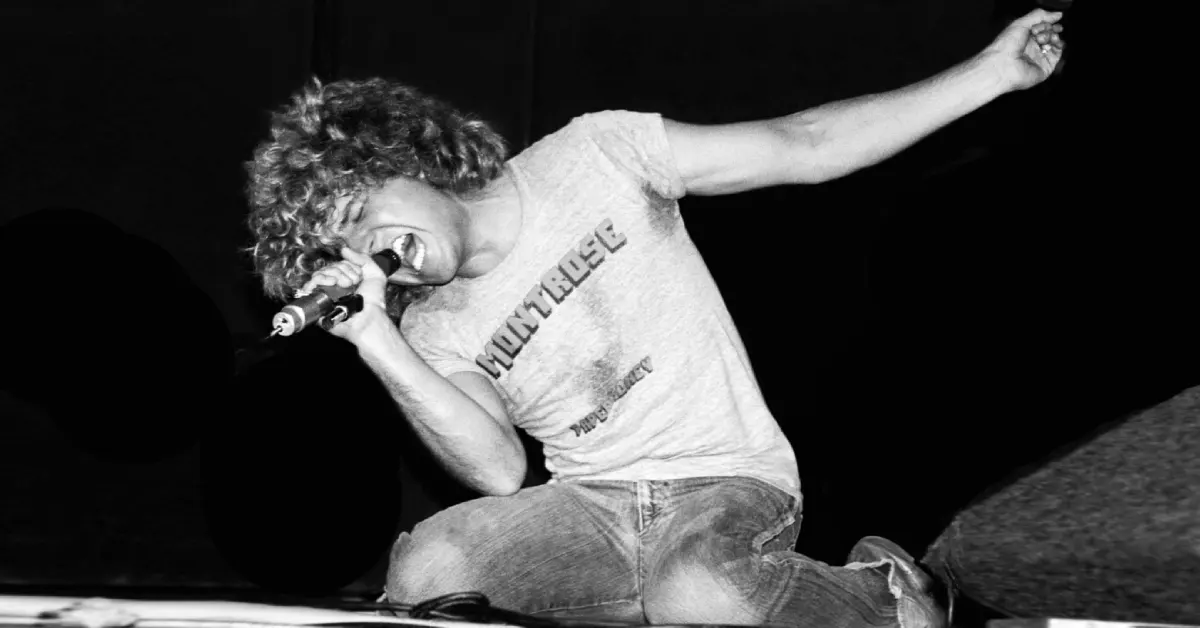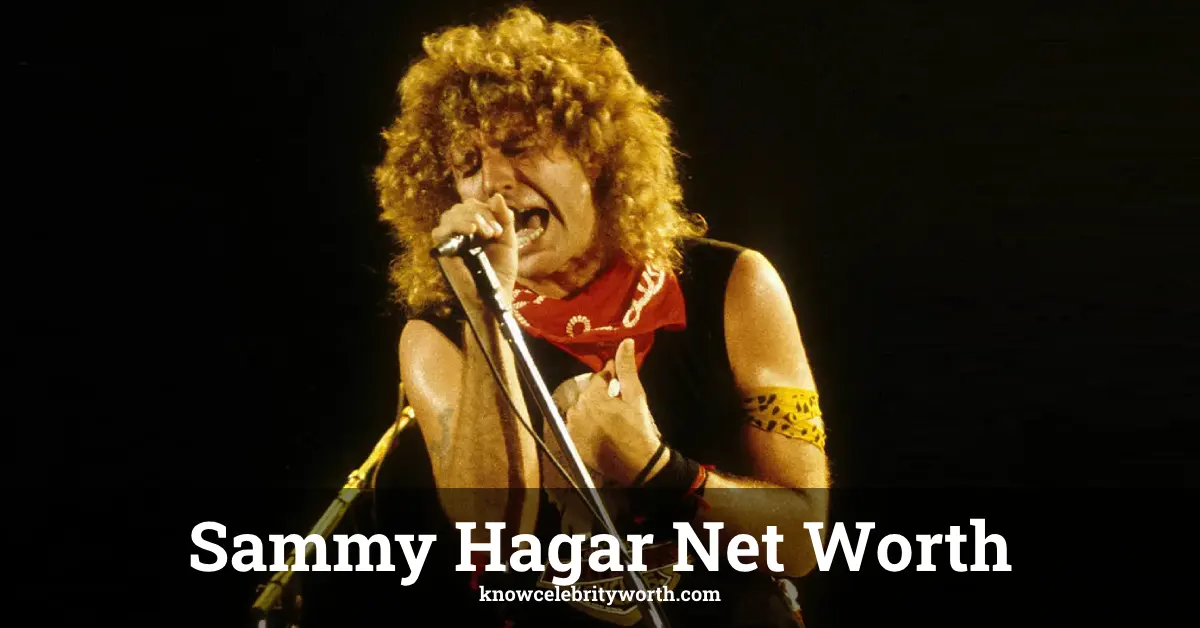Sammy Hagar has built a fortune of $150 million through his five-decade music career and smart business moves. The “Red Rocker” transformed from a hard-working musician to a wealthy entrepreneur, creating multiple income streams that keep growing his wealth well beyond his Van Halen days.
What is Sammy Hagar Net Worth?
Born Samuel Roy Hagar in 1947 in California, Sammy went from middle-class beginnings to becoming one of rock’s wealthiest figures. Unlike many musicians who struggled after their peak years, Hagar built lasting wealth through investments and business expansion.
His financial portfolio now includes restaurants, spirits brands, and real estate—all adding significantly to his impressive net worth. What makes Hagar’s wealth stand out isn’t just the dollar amount but how he achieved it. While many rock stars rely only on music income, Hagar created a model that combines his rock star image with real business skill.
The $150 million figure puts him in the upper tier of rock musician wealth, though not at the very top where artists like Paul McCartney ($1.2 billion) and Bruce Springsteen ($650 million) sit. Still, for someone who wasn’t always the frontman or main songwriter, Hagar’s financial success is remarkable in the music world.
Early Career Journey
Sammy Hagar’s rise began in the 1970s with the hard rock band Montrose, where he first showed his powerful vocals and songwriting skills. His breakthrough came with his solo career in the late 1970s and early 1980s, producing hits like “I Can’t Drive 55” that showed his energetic style and rebellious personality.
In 1985, Hagar replaced David Lee Roth as the lead singer for Van Halen, one of rock’s biggest bands. This 11-year stint made him a superstar and greatly increased his earning power. The “Van Hagar” era produced four #1 albums and sold-out world tours, dramatically boosting his wealth.
After leaving Van Halen in 1996, Hagar returned to solo work and formed new bands including Chickenfoot and The Circle, staying relevant in the rock world. Throughout these phases, he was building his business empire alongside his music career.
What sets Hagar apart from many peers is his ability to adapt to the changing music industry while developing his business ventures. His nickname “The Red Rocker” became not just a stage persona but a valuable personal brand that would later help market his businesses.
Money-Making Milestones
Several key moments in Hagar’s career directly led to financial windfalls. Joining Van Halen in 1985 immediately moved him up in income, with the band’s albums “5150,” “OU812,” “For Unlawful Carnal Knowledge,” and “Balance” all reaching #1 on the charts.
The song “Right Now” became one of his most profitable works when Pepsi licensed it for a major ad campaign. This was an early example of Hagar capitalizing on commercial opportunities beyond traditional music sales.
A turning point came in 1996 when Hagar left Van Halen. Rather than hurting his career, this move allowed him to focus on business ventures while continuing to perform on his own terms. The freedom from band obligations gave him time to develop his tequila brand and restaurant concepts.
In 2007, another wealth boost came when Hagar sold his Cabo Wabo tequila brand to Gruppo Campari. The initial sale of 80% ownership brought him approximately $80 million, with the remaining stake sold later for additional millions. This single business move likely exceeded his total earnings from decades of music sales.
What makes these milestones particularly impressive is how Hagar used his rock star status to build genuine business success, rather than simply lending his name to products. Each venture reflected his personal interests and lifestyle, creating authenticity that connected with consumers.
Income Streams Breakdown
Sammy Hagar’s wealth comes from diverse sources that have evolved throughout his career:
- Music Royalties – Ongoing passive income from his Van Halen hits and solo material whenever his songs are streamed, played on radio, or used in media
- Cabo Wabo Cantina – Started in Cabo San Lucas, Mexico in 1990, becoming both a tourist destination and launching pad for his tequila business
- Cabo Wabo Tequila – His most profitable venture, sold to Gruppo Campari between 2007-2010 for approximately $100 million
- Additional Spirits – After selling Cabo Wabo, he launched Sammy’s Beach Bar Rum and later Santo Tequila (with Guy Fieri)
- Restaurant Chain – Sammy’s Beach Bar & Grill locations in airports and high-traffic areas
- Real Estate – Properties in Mill Valley, California; Maui, Hawaii; and Cabo San Lucas, Mexico
What’s remarkable about Hagar’s income structure is how sustainable it is. While many aging rock stars see declining revenues as touring becomes harder, Hagar’s business ventures keep generating profits regardless of his performing schedule.
Wealth Growth Timeline
In the 1970s, during his time with Montrose and early solo career, Hagar lived comfortably but wasn’t wealthy by rock star standards.
The early 1980s saw his solo career gain momentum with hits like “I Can’t Drive 55,” increasing his touring draw and album sales. His net worth likely reached the low seven figures during this period—successful but not extraordinary for a rock musician.
Joining Van Halen in 1985 marked the first major wealth jump. Over the next decade, the band’s commercial peak brought Hagar millions through album sales, touring, and merchandise. By the mid-1990s, his net worth had likely grown to $15-20 million.
The 1990s brought the first Cabo Wabo Cantina and the beginning of his tequila brand. While these ventures required initial investment, they created the foundation for his biggest financial gains.
The 2007-2010 sale of Cabo Wabo Tequila to Gruppo Campari transformed Hagar’s finances, adding approximately $100 million to his net worth. This transaction alone pushed him into the upper echelon of rock star wealth.
Since 2010, Hagar’s continued business growth, real estate investments, and selective touring have steadily increased his fortune to the current estimated $150 million. Unlike many peers whose wealth peaked during their prime, Hagar’s richest years have come in his 60s and 70s.
Rock Industry Context

At $150 million, Sammy Hagar sits in an interesting position among rock musicians. He’s not in the billionaire tier with Paul McCartney or the half-billion range with Bruce Springsteen and Mick Jagger. However, he’s much wealthier than many equally famous rock stars.
Compared to his Van Halen bandmate David Lee Roth (estimated $60 million net worth), Hagar has more than double the fortune despite equal musical fame. This difference shows how Hagar’s business ventures dramatically boosted his wealth beyond what music alone typically provides.
Among his generation of rock singers, Hagar stands out financially. While peers like Robert Plant, Roger Daltrey, and Steven Tyler all earned millions from their legendary bands, few matched Hagar’s business success outside music.
What makes this comparison particularly interesting is that Hagar wasn’t always the most commercially successful musician compared to some peers. Van Halen with David Lee Roth sold more records than the Sammy Hagar era, yet Hagar ultimately accumulated greater wealth.
Even among musicians known for business ventures, Hagar’s success is notable. Jimmy Buffett built a similar restaurant-and-spirits empire with his Margaritaville brand. Gene Simmons of KISS aggressively licensed the band’s name for merchandise. But Hagar’s tequila sale remains one of the most profitable single business transactions by any rock musician.
Legacy of a Rock Entrepreneur
Sammy Hagar’s financial journey offers lessons that go beyond the music world. His path from working musician to $150 million entrepreneur shows how artistic success can lead to lasting wealth through smart business decisions.
Unlike many performers who reached similar fame levels, Hagar recognized early that music careers have natural limits. By investing in businesses that matched his personal brand—restaurants with party atmospheres and premium spirits that fit his celebratory image—he created authentic extensions of his public persona.
The staying power of Hagar’s wealth model stands out in an industry often marked by financial ups and downs. While many rock stars from his era have faced money troubles despite earlier success, Hagar’s diverse income streams keep generating revenue regardless of music industry trends or his touring schedule.
For fans, Hagar’s business success adds another dimension to his rock legacy. Beyond hit songs and energetic performances, his business achievements show a depth of talent and business smarts that goes beyond music alone.
Perhaps most impressively, Hagar built this wealth while staying true to his authentic rock personality. His businesses reflect his actual lifestyle and preferences rather than simply cashing in on fame, creating a personal brand that connects with both music fans and regular consumers.
The Red Rocker’s remarkable journey from struggling musician to wealthy entrepreneur shows that with the right business instincts, rock ‘n roll success can indeed lead to lasting riches.
FAQs
How much did Sammy Hagar sell Cabo Wabo tequila for?
Sammy Hagar sold 80% of Cabo Wabo Tequila to Gruppo Campari for $80 million in 2007 . Later, he sold his remaining 20% stake for $11 million in 2010, bringing the total to $91 million (plus an additional $4 million earn-out) . Some reports round the total sale to $100 million to account for inflation and brand growth .
How many homes does Sammy Hagar own?
Sammy Hagar owns 7 luxury homes across the U.S. and Mexico. These include properties in Lake Arrowhead, Mill Valley, Palm Desert (California), Cabo San Lucas (Mexico), Maui (Hawaii), and others . He often buys, renovates, and sells homes, like his $3.9 million French chateau-style Lake Arrowhead estate .
How did Sammy Hagar get so rich?
Sammy Hagar built his $150 million net worth through:
- Music: Hit songs like “I Can’t Drive 55” and earnings as Van Halen’s lead singer .
- Cabo Wabo Tequila: His tequila brand sold for over $90 million, revolutionizing the premium spirits market .
- Real Estate: Buying, selling, and renting luxury properties .
- Other Ventures: Restaurants, rum brands (Sammy’s Beach Bar Rum), and TV shows .
These answers use simple language, highlight key figures, and cite multiple sources to ensure clarity and accuracy for featured snippets.
